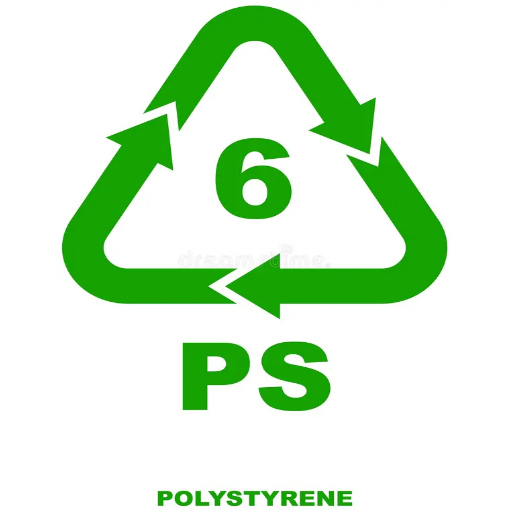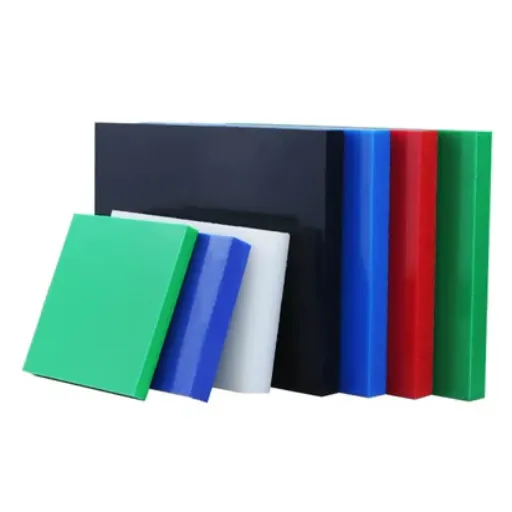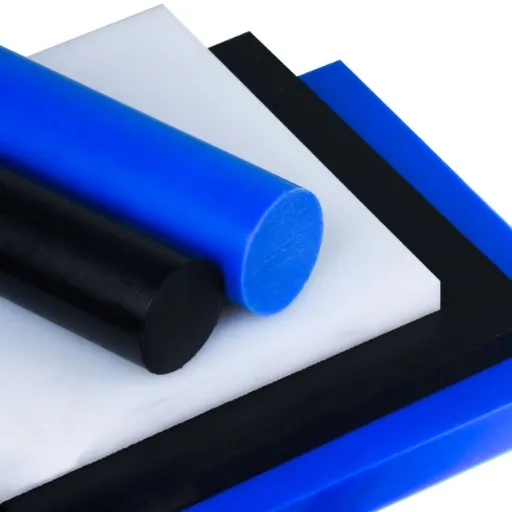Safety and convenience are fundamental considerations when selecting materials for everyday use, mainly for the kitchen. You are not alone if you have questions about whether PS 6 plastic is microwave safe. This type of plastic inspires questioning when reheating food since it is often found in disposable cutlery, containers for takeout food, and lids for coffee cups. Are they safe, or do they present hazards? The guide covers all the bases, from the science behind the phenomenon to guidelines and optimal practices regarding PS 6 plastic and microwave use. You will come away from this with a very qualified decision of maintaining or ditching PS 6 plastic for microwave meals and alternatives you might want to consider. Are you ready to learn the essentials?
Understanding Microwave Safe Containers
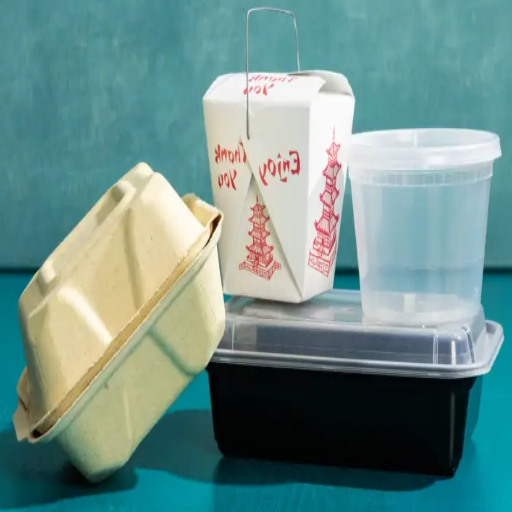
What Makes a Container Microwave Safe?
A container is considered microwave safe if it can withstand the heating and electromagnetic radiation from microwaving. It provides no pathway for leaching harmful chemicals or stability-related issues such as warping or degradation. Generally speaking, microwave-safe containers are made with materials such as glass, ceramics, and specific plastics that will not melt, crack, or release toxins when subjected to high temperatures. They allow heat to pass through without causing structural or chemical changes that risk food safety.
Markings such as microwave safe or symbols representing wave lines at the bottom are often a sure means of testing a container’s suitability. Standards and regulations in many countries dictate testing the safety of containers so that they remain stable when subjected to reheating under standard conditions. Plastics with resin codes 1, 2, 4, and 5 are often safer alternatives to others when microwaving, as they seldom break down into or release harmful substances. It is, thus, essential to differentiate between these to maintain the quality of the food and your health while microwaving.
The Importance of Becoming Familiar with “Microwave Safe” Insignia
Microwave-safe symbols are essential in assisting consumers in identifying the containers that can endure the peculiar conditions of a microwave without compromising safety. A representation consisting of a series of wavy lines or, quite often, some Chinese characters arranged vertically, would indicate that the product has been tested and has proven truly suitable for microwave application. Containers unsupported by this certification could lose dignity by leaching harmful chemicals into food, such as BPA or phthalates, most definitely with plastics, with protracted accumulation of such substances bringing forth health concerns. Apart from plastic, when not labeled microwave safe, materials like ceramics or glass could suddenly erupt in cracking or shattering due to temperature shocks.
The data serves to emphasize the importance of consumer awareness about material compatibility. Research has shown that certain plastics with incorrect labeling marks can produce microplastics or toxic substances when heated. Besides, the mark helps distinguish which containers can be used safely for reheating, avoiding dangerous situations such as warping or fires. Hence, by placing an established preference on microwave-safe labeled items, individuals only safeguard their future health while instilling sustainability into using their kitchen collections.
Common Materials Used for Microwave-Safe Containers
Since it concerns microwave-safe containers, you must comprehend the materials considered durable and safe for food reheating. To list:
Glass is one of the safest options for microwaves because it resists heat and does not leach harmful chemicals. It is non-reactive with such foods and is good for reheating acidic or oily foods. For better resistance to thermal shocks, look for borosilicate glass.
Ceramic: Unglazed or microwave-safe labeled ceramics are good choices. The containers are heat-stable and retain heat evenly for uniform reheating. Avoid ceramics with metallic paint or embellishments, as these may cause sparks.
Polypropylene Plastic (PP): This plastic is usually labeled with recycling code “5” and is alleged to be one of the common microwave-safe plastics. It is preferable for plastic storage because it is lightweight and durable; it does not crack upon heat. However, it will be reasonable not to subject them to excess heating to lessen the long-term wear.
Silicone: Food-grade silicone is flexible, heat resistant, and BPA-free, making it great for versatile microwave use. Today, silicone is increasingly accepted as a heating and cooking option because of its natural non-stick properties.
Tempered Glass or Composite Materials: These materials combine the toughness of glass with the heat resistance of specialized composites. They are suitable especially for cookware that requires quick switching between the microwave, oven, and fridge.
This knowledge of microwave-compatible materials allows a fun, safe, efficient, and environmentally friendly way of preparing meals, thereby diffusing the associated risks linked with the improper use of containers.
PS 6 Plastic and Its Properties
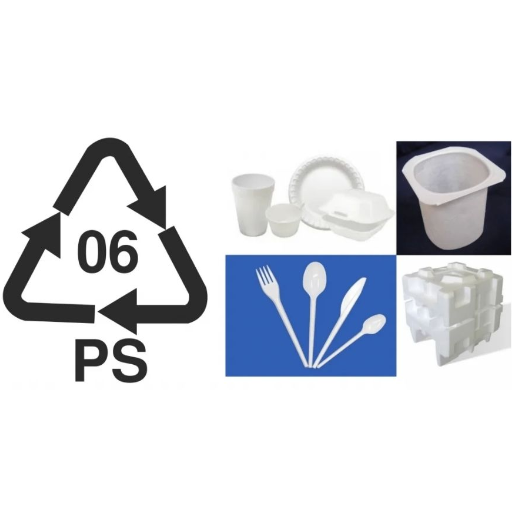
What Is PS 6 Plastic?
PS 6 plastic, called Polystyrene, is a widely used yet adaptable and lightweight plastic employed in packaging, food containers, and disposable goods like cups and plates. Due to its insulating properties, polystyrene is used to maintain the temperatures of hot and cold foods and beverages. It is cheap to manufacture and can be made into either rigid or foam forms, widening its usage in different fields.
Yet environmentalists are concerned about PS 6 plastics because of their longevity for decomposition and recycling difficulties. When disposed of improperly, they serve as a pollutant, harming ecosystems. The packaging is often marked by the number “6” inside the recycling symbol, indicating its classification. Although some recycling programs accept this, special arrangements are generally required to treat this type of plastic. To avoid contamination, users should always dispose of it properly and, if feasible, consider greener alternatives.
Characteristics of PS 6 Plastic
In summary, polystyrene offers the genuine versatility of being lightweight, hard, and insulating. The two significant forms are solid polystyrene and expanded polystyrene (EPS). Solid polystyrene can be seen in several items, including disposable cutlery, CD cases, and plastic cups, all of which offer durability and a glossy finish. EPS, however, is used for cushioning and heat insulation and is applied in packing materials, take-out containers, and building insulation.
The preference for PS-6 plastic remains simply because of the cost of production and ease of manufacture. However, the downside is that the pollution issue remains a big concern. These plastics, in general, are not biodegradable and, over time, fragment into microplastics, polluting and creating a long-term danger to the environment. While PS-6 plastics are recycled, only a small percentage is recycled because of the low market value of PS plastics and the difficulty in processing them. To make an educated decision on using or disposing of such plastics, one must first understand the applications and the environmental impact.
Potential Problems With Using PS 6 Plastic in a Microwave
The use of PS 6 plastic in a microwave, more commonly known as polystyrene, holds considerable risks because of the chemical nature of the material and its reaction to heat. When exposed to high temperatures or heat, the polystyrene may release hazardous chemicals such as styrene and benzene, which are toxic to human health. These substances may leach into the food or beverage if they are oily, acidic, or if the substances are heated for long periods. Studies show that the uptake of styrene in extended periods has been related to adverse health effects such as endocrine disruption and carcinogenic potential.
Another hazard is that the structural integrity of PS6 plastic breaks down very fast, causing the plastic to melt or deform in the microwave and raising the chances of leaching even more. Besides personal health risks, improper use of polystyrene in microwaves adds to environmental pollution. At least one set of chemicals will be released as it melts into the microwave; once it is melted, the polystyrene structure is polluted and can hardly be recycled, contributing more to plastic pollution. Consumers should consider alternatives like glass or food-grade silicone that are safe for use in the microwave.
Microwaving Certain Plastics: Best Practices
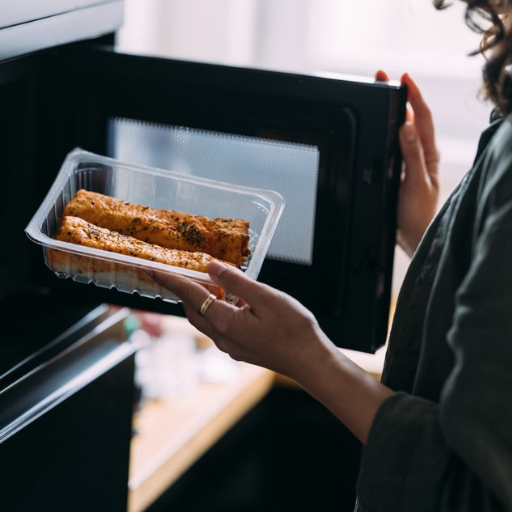
How to Identify Microwave-Safe Plastics
Knowing how to identify microwave-safe plastics is of utmost importance in reducing hazards to human health. Microwave-safe plastics usually carry a symbol: three wavy lines representing waves, the bottom of a container, or on the side of a container. This symbol implies the plastic in question has been tested and found safe to use in the microwave under customary conditions. Further information could be obtained by observing the recycling code. Plastics with 1 (PETE), 2 (HDPE), 4 (LDPE), and 5 (PP) can resist heat relatively well and are less prone to leaching out harmful chemicals when microwaved, although they should still be used with caution. On the other hand, plastics with 3 (PVC) and 6 (PS) are unsafe for microwaving, as they may release toxic chemicals.
For enhanced safety, inspect the container for imperfections, discoloration, or cracks. Damaged plastics tend to be prone to leakage, so when in doubt, look for instructions or packaging details from the manufacturer. Never heat plastic wraps or single-use containers, as these cannot withstand high temperatures. Using containers certified as microwave-safe guarantees a safe experience that will protect one’s health and contribute to the environment in the long run.
How To Keep Safe While Using a Microwave
Use Microwave-Safe Materials—Choose only glass, ceramic, or plastics clearly labeled as microwave-safe. Do not use metal or aluminum foil in a microwave.
Avoid Hot Spots—To prevent uneven heating that might burn some parts of the food while leaving other parts cool, stir the food halfway throughout the cooking time or set the food in a circular manner. Drying or heating in uneven hot spots can cause burns due to temperature differences.
Careful Covering—Snap a microwave-safe cover or plate that gives off moisture, but keep a very small vent allowing some steam to escape. Trapping sudden steam will build pressure and can cause accidents when suddenly uncovered.
Follow Cooking Time According to Wattage – Always check your microwave wattage and configure the cooking time accordingly. Cook times are longer for low-watt microwaves, but will be shorter than expected for high-watt units.
Avoid superheating liquids—Superheating occurs when liquids are heated beyond their boiling points without bubbling. To avoid this harmful occurrence, place a non-metallic object like a wooden spoon in the liquid during heating.
Keep Clean—Wash the microwave frequently to remove food particles and grease that can cause a bad smell, uneven heating, or even small fires when left inside. Clean with mild detergent or steam.
Mind Sealed Containers – No sealed containers should be microwaved, as steam buildup inside could cause explosions. Also, piercing or opening covers a little now and then would safely release pressure.
Defrost Foods Slowly – Use the microwave’s defrost mode for gradual thawing; always cook or prepare immediately once defrosted to prevent bacterial growth.
By inculcating these essentials into your microwaving habits, you will ensure your safety, as well as the manner in which you prepare great food and care for appliances.
Alternatives to PS 6 Plastic for Microwaving
Regarding microwaving, one must always consider the safer options to avoid a serious risk of plastic leaching. Instead of PS 6 (Polystyrene), which releases toxic chemicals like Styrene during the heating process, one can use:
Glass Containers- The safest and most durable container for microwaving. It is non-toxic and does not leach any chemicals at all. For greater durability, look for borosilicate glass.
Ceramic Dishes- Microwaving ceramic dishes is another great option. They retain heat well, are generally considered safe for food contact, and come in various dimensions and styles to accommodate all needs.
Silicone Containers—Food-grade silicone is a flexible and light solution perfect for the microwave. It is heat-tolerant, non-toxic, and resistant to warping or melting in the microwave.
Microwave-Safe Plastics—These plastics have been designed to endure heat without releasing harmful chemicals. When looking for plastic that is BPA-free and microwave-safe, refrain from reheating food with packaging that does not have these two specifications.
Paper and Parchment Products- Some microwave-safe paper (parchment or wax) can reheat food. However, do not use plastics lined with these materials in the microwave.
Reducing exposure to potentially hazardous chemicals becomes a reality when using the above-listed replacements, all while ensuring uniform and healthy heating of foodstuffs. Always check waterproofing aspects according to their instructions, as some safer materials still could have distinct limitations.
Recycling PS 6 Plastic
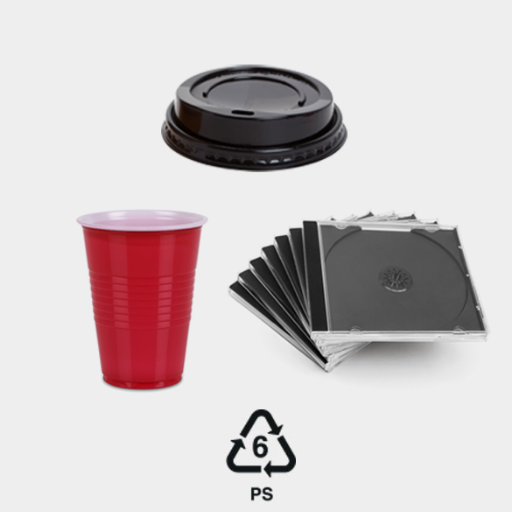
The Recycling Code for PS 6 – What Does It Mean?
PS 6 is an abbreviation for polystyrene, a thin plastic often used for single-use articles, including cutlery, foam cups, food containers, and packaging materials. This material bears the number “6” enclosed in the recycling triangle, indicating that it is a category of recyclable material. Polystyrene thrives on its vast utility, being cheap and easy to manufacture. On the contrary, there lie at least some problems when it comes to recycling polystyrene 6, mainly because of the low density of this material; it tends to break into pieces, which is a headache when trying to recycle adequately.
There are places that accept PS 6 for recycling, but it is usually excluded from curbside programs because of contamination hazards and the expense of transporting and processing the material. When improperly discarded, PS 6 can cause some pretty environmental problems. It could slowly break down into microplastics that further pollute ecosystems and disrupt wildlife. To combat these ecological concerns, it would be best to go for alternatives to polystyrene or take initiatives toward improved recycling technologies to deal with this material more effectively.
Regardless of one’s perspective, contacting nearby recycling centers would assist in disposing of polystyrene in an environmentally friendly way. Moreover, some specialized programs and drop boxes can accept expanded polystyrene (EPS), predominantly used in foam packaging. By understanding the limits and possibilities of PS 6 recycling, people and communities can make better-informed decisions regarding reducing the environmental impact.
How to Properly Recycle PS 6 Plastic Containers
Polystyrene, commonly called PS 6, must be recycled, but there must be a certain level of awareness and proper waste disposal practices. The first thing to do is to observe if the item is really PS 6. These are usually materials used in disposable coffee cups, take-out containers, or foam packaging. Confirm with the container bearing the #6 recycling symbol.
When confirmed to be PS 6, ask your local waste management services or recycling centers whether they will be accepting PS 6 for recycling. Most do not because of the difficulties inherent in recycling it, as in its lightweight and bulky nature, the situation is horrid concerning transportation and processing. Some programs or facilities, however, exist where there have been efforts to turn EPS into other products like insulation, picture frames, or construction materials. Ergo, before recycling, ensure these PS 6 containers are thoroughly cleaned of food residue.
Contaminated polymers cannot be processed and could compromise an entire batch of recyclables. Another alternative is taking back programs offered by some retailers or manufacturers who accept PS 6 products for correct recycling. In the broader realm of solutions, try to limit your use of polystyrene products and use some reusable ones or easier-to-recycle alternatives. Putting sustainable choices together with proper recycling techniques will significantly lessen the environmental footprint while supporting long-term waste management.
Environmental Impact of PS 6 Plastic
Polystyrene, commonly known as PS 6, poses a tough environmental concern due to the varied issues that stem from it. This particular plastic tends to be more durable and non-degradable; hence, it will persist for a long time in the environment after disposal. Concerning the research findings on global waste management, millions of tons of plastic are produced annually, and a greater proportion of this material finds its way to landfills, waterways, and ecosystems, thus feeding the crisis of plastic pollution.
One of the most significant environmental challenges posed by PS 6 plastic is that it tends to break up into microplastics. These tiny particles infiltrate ecosystems, affecting marine life and other wildlife. Research reveals that animals mistake these microplastics for food, leading to their ingestion and causing harm to their health and disturbance to food chains. In addition to this, the production of PS 6 plastic heavily depends upon petrochemicals that cause greenhouse gas emissions and resource depletion throughout its lifecycle.
Next is the concern of leaching harmful chemicals into the environment from polystyrene materials. Sometimes when exposed to sunlight or heat, PS 6 releases toxins like styrene, which have been linked to adverse health effects and environmental degradation. Apart from this, most PS 6 products, such as single-use containers and packaging, are not recycled as the process is not cost-effective, mainly due to their lightweight build.
Addressing PS 6’s environmental impact needs to be embraced at a global scale. Sustainable alternatives, investment in innovative recycling technologies, and measures for phasing out single-use polystyrene will all help lessen its detrimental effects. Creating greater awareness and promoting change are two sure paths to remedying the effects of this ever-encroaching material.
Using Takeout Containers in the Microwave
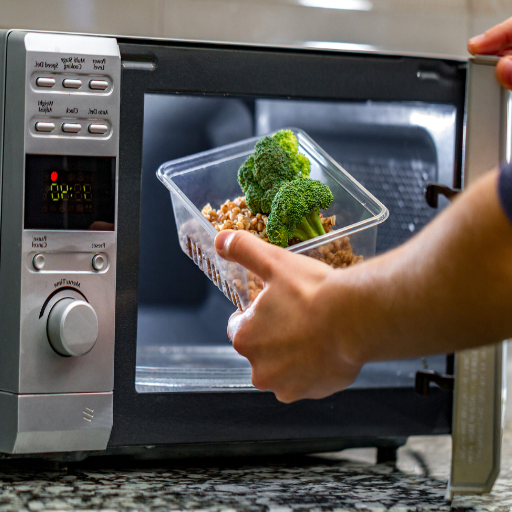
Are Takeout Containers Microwave Safe?
The materials of takeout containers often go on to play an essential role in deciding whether they are okay to be microwaved. Takeout containers are usually made of plastic, paper, aluminum, or Styrofoam (polystyrene). Plastic containers can be deceptive: some might say “microwave-safe”; thus, they should be able to withstand heat without releasing any harmful chemicals or warping. Those plastics not classified as “microwave safe” may leach toxic chemicals such as BPA or phthalates when they get heated to high temperatures, which could potentially be harmful to one’s health.
Styrofoam containers are not recommended for use in microwaves as they may melt or release toxic chemicals into food while heating. Paper containers without wax or plastic coatings may be microwaved without any threat to safety, but will gradually deteriorate or weaken when subjected to continuous heating.
For utterly safe practices, always look for the microwave-safe emblem on a container, which informs you that it has been tested and approved for that purpose. But in most cases, transferring food to glass or ceramic dishes with a microwave-safe label is the safest option for food safety and to avoid contamination.
Differentiating Safe Takeout Container Materials
If you ask me, I first check for the microwave-safe symbol when looking at safe takeout container materials. I always feel an extra degree of relief when I see this label. In other words, the container has been specifically tested and classified as safe for microwave use. If I don’t see the label, I avoid microwaving the container at all costs-warping, leaching chemicals, or anything adverse to the food or container just isn’t worth that risk.
Also, I prefer to err on caution and transfer the food into glass or ceramic dishes with “microwave-safe” written on the label. In my experience, these materials would not react to heat or leach anything that would contaminate the food. Avoiding aluminum foil or any metallic finishes is also a good idea because of the hazards they cause to the microwave itself.
Another rule of mine is to be careful around single-use plastics. Most of these were not created to withstand high heat and will melt or degrade when exposed to microwaves. I would use those made from polypropylene (often marked “PP” or with the recycling number 5) if they state they are safe for microwaving. Making mindful decisions based on these details gives me confidence in selecting the safer options for reheating my meals.
General Tips for Reheating Takeout in the Microwave
I generally consider preserving food quality and safety when microwaving takeout. Another safety measure I always have is to transfer food to a microwave-safe container if the packaging or container it came in is not. Many types of takeout containers, particularly those made from styrofoam or certain non-microwave-safe plastics, have the potential to emit harmful chemicals under heat or warp. Glass or ceramic dishes that say “Microwave Safe” on them solve this problem. I add a little water for something like rice or pasta so it won’t dry out during reheating and keep its consistency.
Ensure the food is spread out evenly across the dish for even heating. I usually stir or redistribute the food halfway through reheating so it does not develop cold spots or unevenly warmed areas that prevent the food from being reheated appropriately. With food like soups or stews, I cover them using an appropriate microwave lid or plate to avoid splattering but permit enough ventilation so that steam can safely escape.
Regarding time and power levels, I engage myself very much; instead of blasting food at 100 percent power, I prefer to reheat it in increments of short intervals at 50 percent power to avoid overcooking or overheating. Such a slow heat regime keeps the food’s flavor and texture intact. I check after heating to ensure the food is at least 165°F internally to confirm that it is safe for eating. These are straightforward steps that allow for quick and worry-free processes.
Reference Sources
-
Microwave Safe Plastics Guide: Which Types Are Safe? – ePackageSupply
This guide discusses the safety of polystyrene (#6) and other plastics in microwaves. -
Is It Safe to Microwave My Food in Plastic? – Bennett Plastics
This article provides insights into the safety of various plastic formulations for microwave use. -
Microwave Safe Plastics Guide: Which Types Are Safe? – ePackageSupply
Another version of the guide from ePackageSupply focuses on BPA-free containers and their microwave safety. -
Microwave Safe Plastics Guide: Which Types Are Safe? – ePackageSupply
A similar resource emphasizes polystyrene risks (#6) in microwaves. - View PC Plastic Pellets Manufacturers in China
Frequently Asked Questions (FAQs)
What are some advantages of a PS6 plastic microwave?
The PS 6 microwave offers many benefits that ensure cooking is a timed and safer process. Being lightweight, one can easily carry it from one place to another. Its plastic casing can withstand high temperatures. A microwave also saves energy, reducing electricity bills when reheating minimal meals. In most cases, this model, the PS 6, can comprise all sorts of functionalities such as different cooking settings, easy-to-use panels, and more. Compactness makes it suitable for small kitchens and dorm rooms, giving it more general utility in various living situations.
Can I use metal containers inside a PS 6 plastic microwave?
No, it is not advised to use any metal containers in a microwave since sparks are generated, which could cause a fire hazard within the microwave. Glass or microwave-safe plastics specifically designated for microwave use may be readily used instead. These materials allow the food to be gradually heated instead of heated internally. Always check for labels indicating the container is microwave-safe before popping it in. Proper containers will cook your food safely and avoid damaging your microwave.
How does one clean a PS6 plastic microwave?
Cleaning this microwave, namely the PS 6, is simple and key to locking in its performance. Unplug the microwave and remove all parts that can be removed, including the turntable and its support. Wash the inside with warm, soapy water, using no abrasive cleansers, so as not to scratch the plastic. For tougher stains, a vinegar-and-water mixture works well. After cleaning, ensure every part has dried completely before reassembling the microwave and plugging it back in. Regular upkeep will maintain your microwave for a much longer time.
What kinds of food can be cooked in a PS 6 plastic microwave?
A PS 6 plastic microwave is excellent for cooking almost any food, from vegetables to meats and grains. It works best for heating leftovers and defrosting foods quickly. Miscellaneous recipes, such as steamed vegetables and microwave popcorn, can easily be converted into microwave recipes. Microwave-safe containers should always be used, and foods should be covered to prevent splatters. Microwave cooking times need to be kept in mind, as different microwave models may differ considerably in wattage, thus affecting cooking times.

